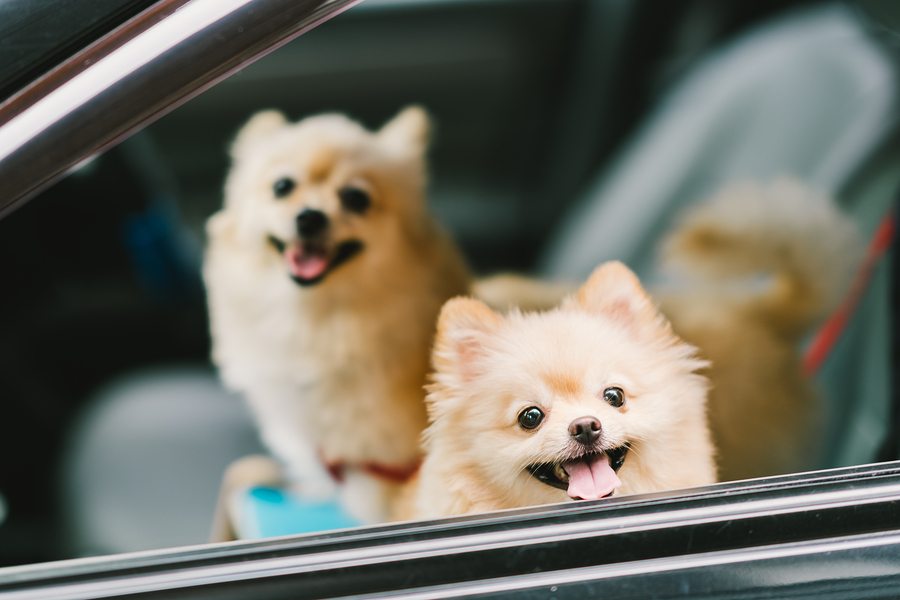Moving With Pets: Our Top Tips
Let’s face it, moving is ruff! Some of us may not realize that we are not the only ones affected by the stress of selling or buying a home. Pets are family, and it’s just as important to have their needs in mind when preparing to transition. Here are some of our best tips to make moving with pets as easy as paw-sible and help them adapt comfortably to their new fur-ever home (many of these tips apply to other types of pets too, not just the furry ones!).
First Things First: While Your Home is on the Market

- Share any important details with your agent about your pets. In particular, let them know how to show the home if your pets must be home (for more on this topic, click here.)
- Showing tip! Be sure to place any pet-related items (dog bowls, kitty litter boxes, etc.) out of sight when your home has a showing or open house. Give your home the pet “sniff test” and vacuum/air freshen as needed.
Before You Move
- Pack Ahead of Time – Don’t pro-cat-stinate! Start bringing in boxes and packing as early on in the process as possible so your animals can adjust. They are more aware than you think, so try your best not to pack at the last minute, (which can stress out everyone in your household!).

- The Vet
- If you are staying local, have your current vet update their records with your new information.
- Are you moving out of the area and need a new vet? If so, you should have one lined up or at least know where the closest vet is in case of an emergency. Ask your current vet for copies of all past records and health certificates, which some states require. It’s also not a bad idea to have your current vet refill all medications your pet requires. Vets can even prescribe something for motion sickness, which can come in handy for long car rides.
- Are you moving internationally? Ask your current vet about all paperwork, vaccinations and ID’s the specific country requires. Schedule a check-up if needed.
- Tags & Identification – Don’t fur-get! Make sure you have updated tags with your new address and phone numbers, if applicable. If your pet(s) are not microchipped, you may want to consider it. We hear too many stories about animals running away because they are traumatized by their new surroundings. Microchipping is just a way to make sure that if your pet does get loose and runs away, you have a better chance of finding them and bringing them home quickly.
- Carriers & Leashes – When moving with pets, carriers are a great way to help protect smaller animals. If your pets are not accustomed to carriers, introduce the carriers to them early enough so they can become comfortable with their temporary surroundings. Make sure any carrier is well ventilated. Place your pet’s favorite toys and blankets in the carrier to help them feel more at ease and recognize the carrier as a safe place. For larger pets, have secure leashes and collars ready for them.
- Moving Day Plans – Making arrangements for your pets on moving day is very important. Whether it’s dropping them off at a friend’s home, setting up boarding, or designating a room/area within your current home for them, be sure you have a solid plan in place. Also, tell all your family members about this plan. If traveling a distance, reserve pet-friendly lodgings ahead of time. If moving internationally, contact your airline to learn about all pet-related requirements, fees, and/or restrictions (can also apply to domestic flights).
Moving Day

- Staying Home – If your pets are staying at home on moving day, pack up their secured area last. Provide them with plenty of water, food/treats, and toys to distract them. Check on them often to reassure them that all is ok. Try to maintain their regular routine of eating and getting outside as much as possible.
- Boarding or Play Date – If you have made arrangements for your animal to board or have a play date at a friend’s place, drop them off the night before. Provide them with plenty of food, toys, and comfort items.
- Road Travel – If you are road tripping when moving with pets, put them in the car/truck last so they don’t overheat. Pack plenty of water, have treats available, and stop regularly for bathroom breaks and much-needed leg stretching. Make sure leashes and medications are easily accessible. For more of our best moving tips, click here.
Introducing Your Pet to a New Home & Adjustment Period

- Before allowing your pets to explore their new surroundings, a little “pet-proofing” is suggested:
- Ensure there are no health hazards such as cleaning products, poisons, mouse traps etc. that were left behind.
- Securely shut and lock all windows, gates and doors.
- Check for any dangling drapery or electrical cords or holes pets can crawl or fall into.
- If there is a pool at your new home, cover it – at least until they become accustomed to it.

- When movers arrive with belongings, again, secure your pet(s) in a crate or safe room.
- Don’t try to establish your pets new routines too quickly. Give them time to adjust naturally.
- Prepare yourself for temporary changes in behaviors. This is to be expected.
The Bottom Line
Planning is essential when moving with pets. Moving is a stressful time for anyone but pets are particularly sensitive to new sounds, smells and settings. In my opinion, it is the purr-fect opportunity to grab our fur babies and give them extra snuggles and remind them just how important they are to us.
If we can help you and your pet find your new home, please contact us today!


